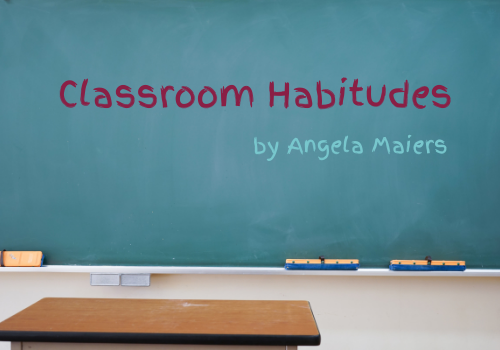This is an excerpt from my book, Classroom Habitudes. The following presentation and mini-lesson is one I share with students in teaching the Habitude of Courage. The italicized text in the mini-lesson (below presentation) is what I say to the class.
“One courageous step at a time. We develop courage by doing courageous acts.” – Aristotle
Wherever we see greatness, we are looking at the result of someone who had the courage to act. Without action there can be no change, and without change, there can be no improvement or growth. Fear can be immobilizing, but action sets change in motion. The best cure for fear is action. This lesson is about helping students through every step of action.
Fear Gradient Lesson
Good Morning Fearless Learners – We have had some great conversations about courage and fear. Knowing that even the most courageous still get afraid is helpful, but what I really want us to explore today is what tools we need to face that fear. Ignoring it, denying it, avoiding it, only gives fear more power. I want to share with you one of the tools that I use to help me manage my fear, literally one step at a time.
One of my passions growing up, and still today is playing the piano. I loved to play, I did not even mind the bad notes, but I was terrified of the piano performance. Getting up on stage and performing in front of a large group absolutely terrified me. The fear of other people judging me and thinking about how I play, act, and perform was stopping me from moving forward with my skill. It was like a giant roadblock getting in the way of what I loved to do-play and perform. The tool that helped me manage my fear during this time is what I call my FEAR GRADIENT.
Here’s how it works:
I did not want to throw myself into my fear all at once, so I opted for smaller, less fearful tasks and used those to build a foundation of courage and confidence. I chose 3 or 4 levels of easier, less scary tasks. And like stepping stones, each level brings me closer and closer to conquering what I am most fearful about.
With piano, I knew my goal was playing at my school musical where my audience was BIG – all the school faculty, students, and my friends and family members.
- Level One- for me it was playing for a small group first. I would invite family and a few friends during practice so I would get used to an “audience.” They would give me encouraging words and tell me that I could play for anyone! That gave me the confidence to move to
- Level Two- was playing for a bigger audience at my church.The piano was in the back, and I knew no one really was looking at me, so I could feel what it was like playing for a bigger crowd without as much pressure. Over time, I was able to confront the hardest fear — giving a high pressure performance for a BIG audience.
- Level Three- Now, I am able to play for friends and family, church, and yes, even for BIGaudiences. Fear did not stop me from pursuing my dream, in fact I love performing. Wanna hear a tune?
My point is this: I still get nervous, but I have been able to replace fear with courage; courage to know that I can actually do what I thought that I could never do. And you can do the same; baby steps are what it takes.
Student Assignment: Create a Fear Gradient. Have students identify something that they are fearful about doing. They can do this publicly or record their goal in their courage journal. Students can work with partners to help identify two or three “baby steps” that can be used as landmarks on their gradient to represent Levels one and two. The assignment can take several weeks depending on how steep their learning curve is http://orthocentre.com.au/cialis-online/. The exercise can be shared accordingly over time. (click on the image below to enlarge and print for your students).
In my book, Classroom Habitudes, there are over 40 mini-lessons like this one, along with Graphic Organizers and Mentor Texts. If you are teaching Habitudes in your classroom, I’d love to hear from you or read your lesson plan on your site.


